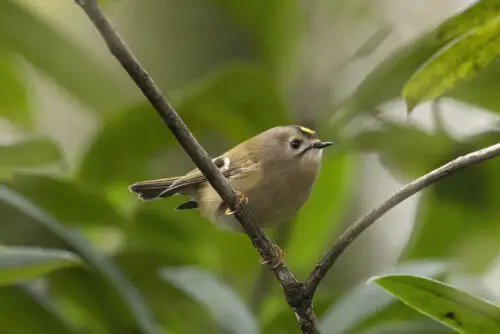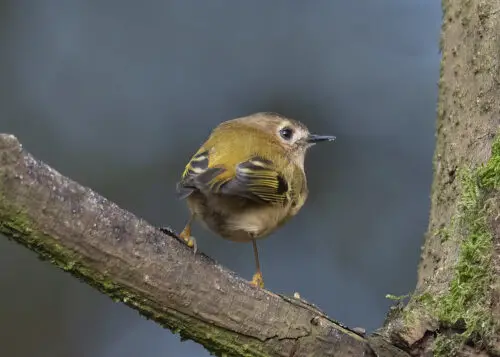Dive into the enchanting world of the smallest songbird on Earth, the goldcrest!
This minuscule marvel, with its charming appearance, delicate song, and intriguing behavior, has captured the imagination of birdwatchers and nature enthusiasts worldwide. Discover where to spot this petite avian gem, explore fun facts, and learn about its conservation status in this lighthearted and informational journey into the world of the goldcrest.

When we think of songbirds, we often envision the melodious trills and vibrant colors of our feathered friends. But have you ever wondered what the smallest songbird in the world might be?
Well, prepare to be enchanted by the goldcrest (Regulus regulus), a tiny member of the kinglet family, and the proud bearer of the title for the smallest songbird. These petite and captivating birds possess some truly fascinating traits that make them perfect for our nature-loving exploration today.
Appearance and Sound
he goldcrest is a diminutive bird, with a body length of just 3.3 to 3.7 inches (8.5 to 9.5 centimeters) and a weight of around 0.16 to 0.25 ounces (4.5 to 7 grams). This charming songbird sports a predominantly olive-green plumage, with paler underparts and a distinctive yellow or orange crest on its head. The crest is bordered by black stripes, giving it an appearance that resembles a tiny, feathered crown.
When it comes to their vocalizations, goldcrests are truly delightful. They produce a high-pitched, delicate song that consists of rapid, silvery trills, earning them the nickname “king of the birds” in some European folklore. Their charming song serves as a territorial call and a way to attract a mate, adding to their overall allure as songbirds.

Where can the Goldcrest be seen?
The goldcrest’s range spans across Europe and Asia, and these tiny birds can be found in a variety of habitats, including coniferous and mixed forests, gardens, and parks. They are also known to breed in the United Kingdom and Ireland, making them accessible to birdwatchers in these regions.

Diet and Behavior
The goldcrest’s diet mainly consists of tiny insects and spiders, which they deftly pluck from the foliage of trees and bushes using their thin, sharp beaks. These agile birds are also known to hover momentarily while foraging, resembling the behavior of hummingbirds.
Goldcrests are quite sociable and can often be found in mixed flocks with other small birds, particularly during winter. Their active nature and constant flitting from branch to branch make them a delightful sight for birdwatchers.
Here’s a fun fact for all you Goldcrest enthusiasts! Despite their tiny size, goldcrests are capable of some incredible feats of endurance. During migration, these birds have been known to cover vast distances, even crossing the North Sea in search of suitable wintering grounds. This remarkable ability to travel such distances is a testament to their tenacity and resilience.
Conservation Status
Fortunately, the Goldcrest is classified as “Least Concern” by the International Union for Conservation of Nature (IUCN). This classification is due to their large population size, widespread distribution, and relative resilience to habitat changes.
Nonetheless, it is essential to maintain the preservation of their natural habitats and be mindful of the potential impact of human activities on their populations. As with all wildlife, promoting sustainable practices and responsible interactions with these enchanting creatures is vital for their continued survival and well-being.
Fun Fact
Here’s a fun fact for all you goldcrest enthusiasts! Despite their tiny size, goldcrests are capable of some incredible feats of endurance.
During migration, these birds have been known to cover vast distances, even crossing the North Sea in search of suitable wintering grounds. This remarkable ability to travel such distances is a testament to their tenacity and resilience.
Conclusion
The goldcrest, with its endearing appearance, delightful lsong, and remarkable endurance, truly earns its title as the smallest songbird in the world. Whether you’re an experienced birdwatcher or a casual nature lover, the sight and sound of these tiny birds is always a joy. So, the next time you venture into the great outdoors or take a leisurely walk through a park, keep an eye (and an ear) out for the goldcrest and let their enchanting trills remind you of the magical world of nature that exists even within the tiniest of creatures. Happy birdwatching!
